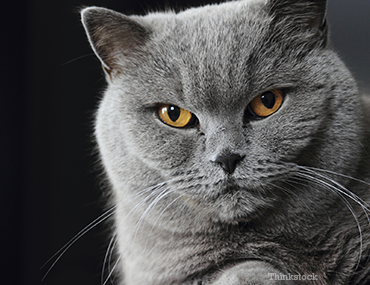
Dr. Phil Zeltzman is a traveling, board-certified surgeon in Allentown, PA. His website is www.DrPhilZeltzman.com. He is the co-author of “Walk a Hound, Lose a Pound” (www.WalkaHound.com).
Katie Kegerise, a Certified Veterinary Technician in Reading, PA, contributed to this article.
JT, a 6 year old cat, went to his family vet after his owner noticed that he was holding his mouth open. In addition, his chin looked bigger than it used to. JT's vet examined him and noticed a fleshy, pink mass on his lower jaw: just behind his front teeth. It was so close to the teeth that it was pushing some of them out of alignment.
His owners had two choices: a biopsy to confirm his vet's suspicion of cancer, or surgery to remove the mass and part of the jaw. They discussed pros and cons of both.
The pros and cons of biopsy
The disadvantages of taking a biopsy included:
- Anesthesia (a somewhat invasive procedure)
- Expenses
- Time (at least a week to get the biopsy results back)
The main benefit of a biopsy is confirmation of the diagnosis. The clients agreed with their vet when he said that the mass should be removed regardless of what it was.
Testing for the spread of cancer in a cat
Before they left the clinic, their vet took some chest X-rays to make sure cancer hadn't spread to the lungs (a.k.a. metastasis). Blood work was also performed to make sure JT was a good candidate for anesthesia. Fortunately, everything checked out okay.
Removing the mouth tumor
Since JT needed a specialized procedure, he and his owners were referred to a board-certified surgeon.
 The surgeon explained that the mass was invading not just the gum, but also the jaw bone (mandible), which meant that the mass itself couldn't be removed. Instead, the front part of the jaw had to be sacrificed. The surgeon suspected an aggressive tumor called squamous-cell carcinoma, so treatment had to be aggressive to improve JT's comfort and survival chances.
The surgeon explained that the mass was invading not just the gum, but also the jaw bone (mandible), which meant that the mass itself couldn't be removed. Instead, the front part of the jaw had to be sacrificed. The surgeon suspected an aggressive tumor called squamous-cell carcinoma, so treatment had to be aggressive to improve JT's comfort and survival chances.
Not removing the mass invariably leads to pain, inability to eat, weight loss, drooling, and an overall poor quality of life.
During surgery, the chin was removed and the skin was reconstructed by the surgeon. Besides having a shorter lower jaw, JT looked pretty normal. He started to lap up liquid food the evening of surgery and went home 24 hours later.
Results of surgery to remove the tumor
Even though the procedure sounds very invasive and a little scary, most cats and dogs do very well after surgery. They typically eat soon after, and don't have much trouble getting back to their normal habits.
A week after surgery, the biopsy confirmed both doctors' suspicion: the mass was squamous-cell carcinoma.
Fortunately, this type of cancer rarely spreads to other organs. But it can come back if the surgery is not aggressive enough. Chemo is not a great option, but radiation therapy is sometimes recommended after surgery.
JT’s owners chose to do surgery only, and so far our kitty is doing great, eating, and playing as if nothing ever happened.
If you have any questions or concerns, you should always visit or call your veterinarian -- they are your best resource to ensure the health and well-being of your pets.
